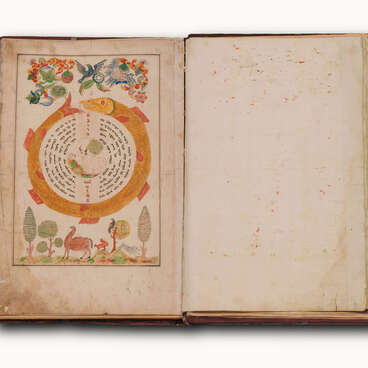A Keter (Torah crown) is an ornament in the form of a crown that covers the Torah Scroll, the parchment on which Ten Сommandments are inscribed. The bells on the crown, either gilded or silver-plated, mark the sacred act of removing the Torah Scroll from the sacred ark in the synagogue. It is a display of sacramentality of the Torah and respect for it as the most important relic of Judaism. It is traditionally kept behind a special embroidered curtain, in an ornate case, and is only touched with a silver or ivory pointer. According to tradition, God spelled out the contents of the Torah Scrolls to Moses the Prophet over 3,000 years ago, and this was the beginning of the national identity of the people of Israel.
The custom of decorating the Torah Scroll with a crown was known since the early Middle Ages, but became widespread in the 17th century. The shape of the crown became one of the popular symbols of Judaism, but it was not strictly canonized. Craftsmen and artisans had a free choice of decorative patterns and jewelry techniques. Most often the crown was decorated with floral designs and traditional sacred symbols: eagles, lions, unicorns, pomegranates, grapes.
Torah crowns could have been copies of the original royal crowns of the European rulers. In Central and Eastern Europe a crown in the form of a hoop with bands attached to it was widely known. They were curved in the form of volutes and connected at the top point under the tier of the crown or the figure of a sacred symbol. Congregants or communities presented Torah crowns as gifts to the synagogue, they raised money for them and commissioned them from the finest jewelers. The crowns were engraved with the names of the donors, wishes, blessings, names of communities, and dates.
The multi-tiered crowns were often engraved with the text from the The Mishnaic tractate “Avot”:
The custom of decorating the Torah Scroll with a crown was known since the early Middle Ages, but became widespread in the 17th century. The shape of the crown became one of the popular symbols of Judaism, but it was not strictly canonized. Craftsmen and artisans had a free choice of decorative patterns and jewelry techniques. Most often the crown was decorated with floral designs and traditional sacred symbols: eagles, lions, unicorns, pomegranates, grapes.
Torah crowns could have been copies of the original royal crowns of the European rulers. In Central and Eastern Europe a crown in the form of a hoop with bands attached to it was widely known. They were curved in the form of volutes and connected at the top point under the tier of the crown or the figure of a sacred symbol. Congregants or communities presented Torah crowns as gifts to the synagogue, they raised money for them and commissioned them from the finest jewelers. The crowns were engraved with the names of the donors, wishes, blessings, names of communities, and dates.
The multi-tiered crowns were often engraved with the text from the The Mishnaic tractate “Avot”:



